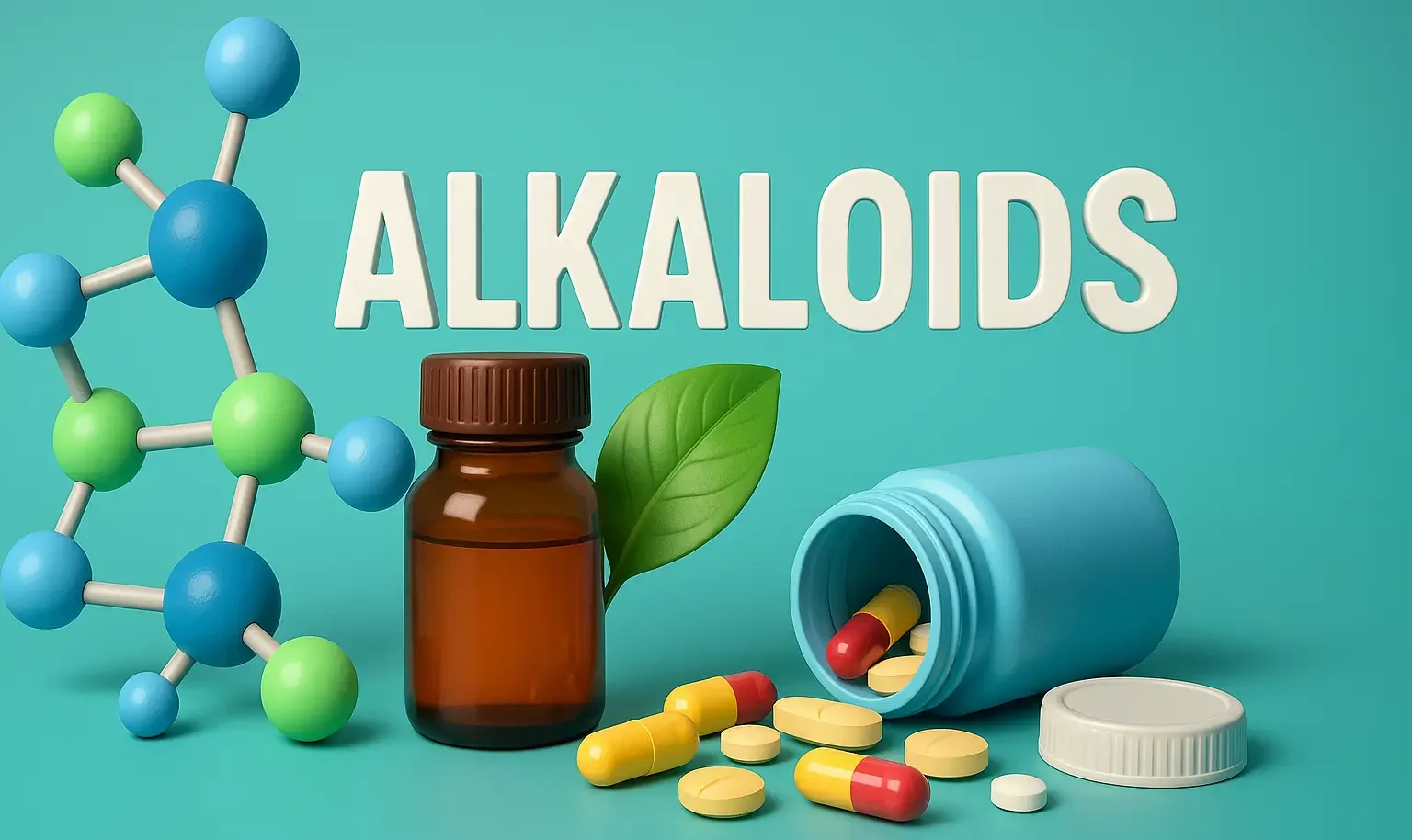- Introduction to Alkaloids: Naturally occurring nitrogenous compounds found in plants.
- Introduction to Alkaloids: Known for diverse pharmacological actions like analgesic and antimalarial effects.
- Alkaloids are naturally occurring, nitrogen-containing compounds produced primarily by plants (though some are produced by fungi, bacteria, and animals).
- They often have a strong physiological effect on humans and animals.
- The nitrogen is typically part of a heterocyclic ring system, which greatly influences their chemical and pharmacological properties.
Introduction to General Properties of Alkaloids
-
Basicity:
- Alkaloids are usually basic due to the lone pair on the nitrogen. However, some alkaloid (e.g., colchicine) are neutral.
-
Physicochemical properties:
- Most are crystalline solids; a few (e.g., nicotine) are liquids.
- Many are bitter in taste.
- Soluble in organic solvents, but often sparingly soluble in water (in free-base form). However, their salts (formed with acids) are more water-soluble.
-
Pharmacological significance:
- Alkaloids frequently have potent biological activities. They can act on the central nervous system, cardiovascular system, or smooth muscles, among other targets.
Classification:
Alkaloid are classified based on:
- Biosynthetic pathway or precursor (e.g., indole alkaloid, isoquinoline alkaloid).
- Chemical structure (e.g., pyrrolidine, tropane, quinoline, isoquinoline, indole, steroidal, etc.).
- Taxonomical distribution (e.g., family-specific alkaloid).
Advertisements

